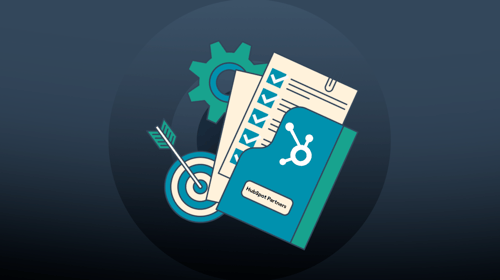In this blog, we explain why businesses need a comprehensive understanding of the buyer journey in order to create lead-generating content.
When it comes to content creation, knowing how and when to use certain content assets - such as blogs, eBooks and case studies - to attract, engage and convert website visitors is essential.
Though all content assets will no doubt contribute to your website's marketing activity, proper use and management of that content will ensure it delivers consistent, ongoing value.
In this blog, I’ll highlight how you can build an effective content marketing strategy by using specific content assets at different stages of the buyer journey, as well as how HubSpot can support your content marketing efforts.
Before we dive in, let’s start from the beginning. Before creating any content, you need to understand what the buyer's journey is.
What is the buyer journey?
The Inbound Marketing methodology is built on three key stages: awareness, consideration and decision (though the flywheel has added more stages between them to better reflect how we buy).
-
Awareness stage – At the awareness stage, the prospect is conducting research to understand more about the problem they are experiencing. They may not even know or realise they have a business challenge or pain.
-
Consideration stage – The consideration stage is when the prospect has identified their problem and is researching possible solutions to solve it.
-
Decision stage – The final stage is when the prospect has decided on and is filtering through a list of potential vendors to find the best one suited to their needs.
It is vital to consider the buyer journey stages and where prospects sit within them. A prospect could be sitting on the fence between two stages - or they could just be searching for information and not ready to look at case studies or make a purchase.
Taking this into account, creating content for every stage of the buyer's journey is necessary to help move prospects from one stage to another.
Often, we find that businesses have a lot of content at the awareness stage and the consideration stage of the buyer’s journey, but very little at the decision stage.
Decision-stage content plays a pivotal role in converting leads into customers - but some businesses have no more than a "contact us" call-to-action (CTA) on their website. If businesses are to nurture leads to a point of purchase or enable website visitors to engage, they need more than just a CTA button!
What types of marketing content can you use at each stage?
Below are the content assets normally used by marketers to attract, engage and convert website visitors.
-
Blogs
Blogs are usually the shortest written content pieces. They are quick to read and focus on a specific pain point that prospects need to be resolved. Blogs can be used at both the awareness and consideration stages - first to help a prospect understand their pain point and then to show them how it can be resolved.
Our advice? Instead of short articles, focus on creating long-form blog posts that answer the questions your prospects have in detail. The average Google first page result contains more than 1,890 words - so creating comprehensive blog pieces is worth considering. Make sure you update your long-form articles regularly!
-
Infographics
Infographics allow businesses to simplify, condense and present information in a visually engaging way. Infographics are often used on social media platforms to make detailed information accessible to a larger audience. They can help to raise awareness of a business and demonstrate expertise and wider industry knowledge. Infographics work brilliantly if there are some surprising statistics or research that can be highlighted.
-
Video
Though blogs remain the main content format for many businesses, video isn’t too far behind. Thanks to smartphones with high-quality cameras, creating a video is easier than ever and allows website visitors to engage in a different way. Video can be used at every stage of the buyer journey, from simple how-to videos and guides to troubleshooting videos that can be used by your customer support team to help clients resolve issues.
-
eBooks
Though eBooks have a less serious tone than white papers and are shorter in length, they are still longer and more informative than blogs. Typically, eBooks are used to generate leads and are used as “gated content” – i.e. they sit on a landing page and are gated behind a form. To download the eBook, website visitors must disclose some of their details.
-
Webinars
For prospects looking to learn more about a particular topic – webinars are excellent. Designed to be more interactive than eBooks (as webinar attendees can often ask questions in real-time) webinars can both educate and nurture leads, as well as demonstrate expertise.
To get access to a webinar, website visitors must disclose their details (becoming a leader in the process), making them a great lead qualification tool.
-
Case studies
Case studies are invaluable assets when it comes to establishing proof that a business is capable of delivering a particular service. Often prospects will look at customer reviews or case studies to understand how good a specific business is and whether that business can deliver the solution they need.
-
Pricing documents
Businesses need to make the sales process as frictionless as possible, so instead of having potential leads call in to speak to the sales team about a product or service, make pricing documents and product documents available to download on the website. Lock these assets behind a landing page form. Anyone genuinely interested in what a business has to provide will happily disclose their details in exchange for the document. This way, businesses can quickly qualify leads – and people looking at pricing documents are no doubt close to making a purchase!
Of course, knowing what content to create at each stage of the buyer journey is one thing – knowing what topics the content should cover is another. To create engaging content, you need to have an in-depth understanding of your target audience and this means creating buyer personas (if you haven’t already) or refining your existing ones. Check out our blog on buyer personas to find out how you can develop yours.
Use HubSpot to manage your content
HubSpot is a great tool for organising and scheduling any blog content you want to publish on your website. Most marketers manage several marketing channels and content strategies simultaneously, so having HubSpot can really streamline the process.
The beauty of HubSpot is that it allows you to draft, archive and schedule blog posts as and when you want. Once they go live, you can see a list of all your published content and most importantly, how they are performing – graphs are used to demonstrate how many views and subscribers you have. It can also categorise your top-performing blogs, so you are always aware of the content that is generating and possibly qualifying your leads.
By planning in advance, you not only save time with HubSpot but keep your content secure and all in one place. This enables you to revisit old content and see what could be updated to improve its relevance and performance. Including new information, calls-to-action (CTAs) and internal links, for example, are all worth doing.
Be sure to keep updating and editing your blogs to ensure they apply to any new findings or research. To read more about the benefits of repurposing content, click here for a case study review.
Much of your content planning comes from understanding the differences between each content asset and how they tie into the buyer journey stages. Once you know the differences, strategic lead qualification is much easier and you’ll be well on your way to attracting, engaging and converting website visitors.










-3.png?width=500&height=320&name=Matt%20-%20imagery%20bank%20(8)-3.png)

